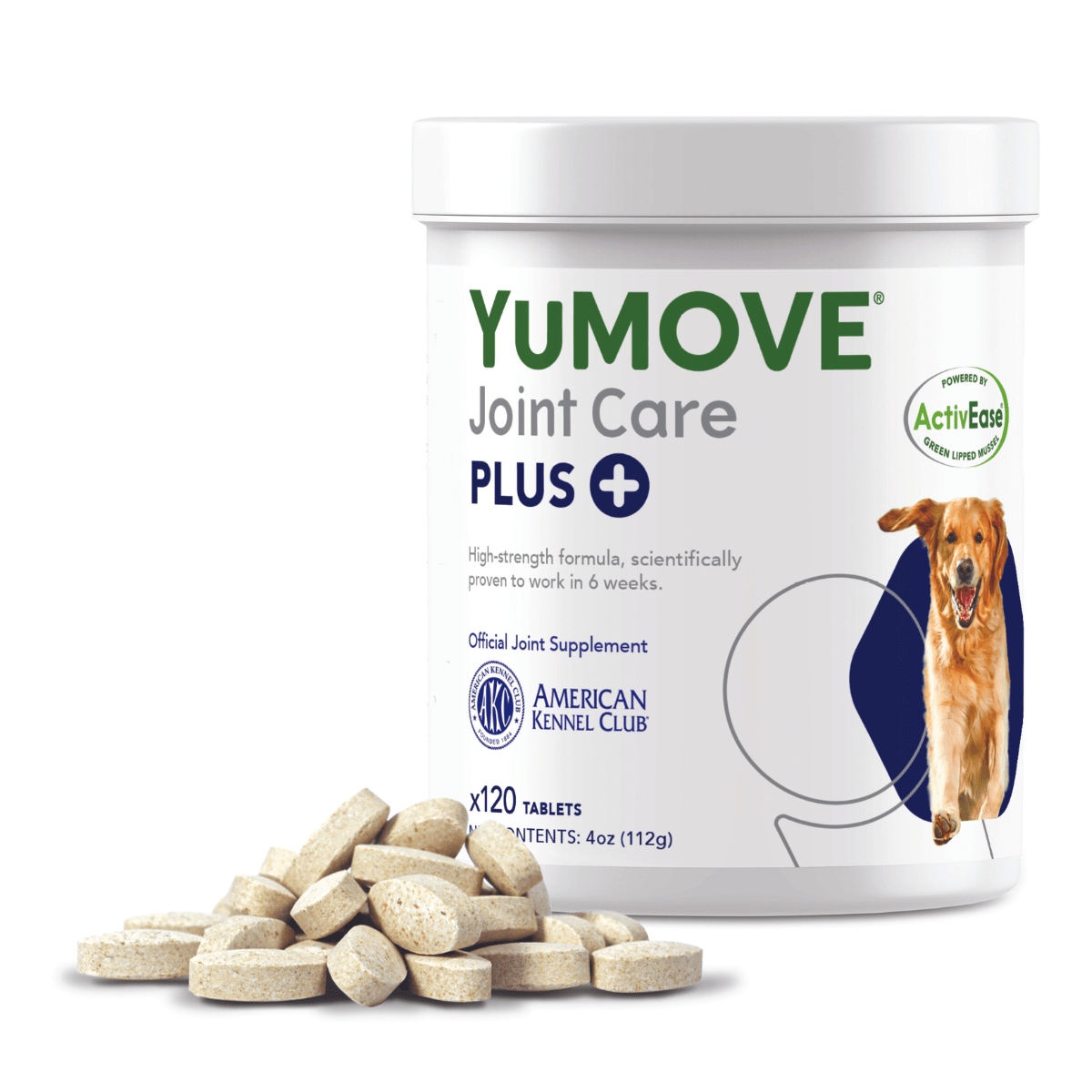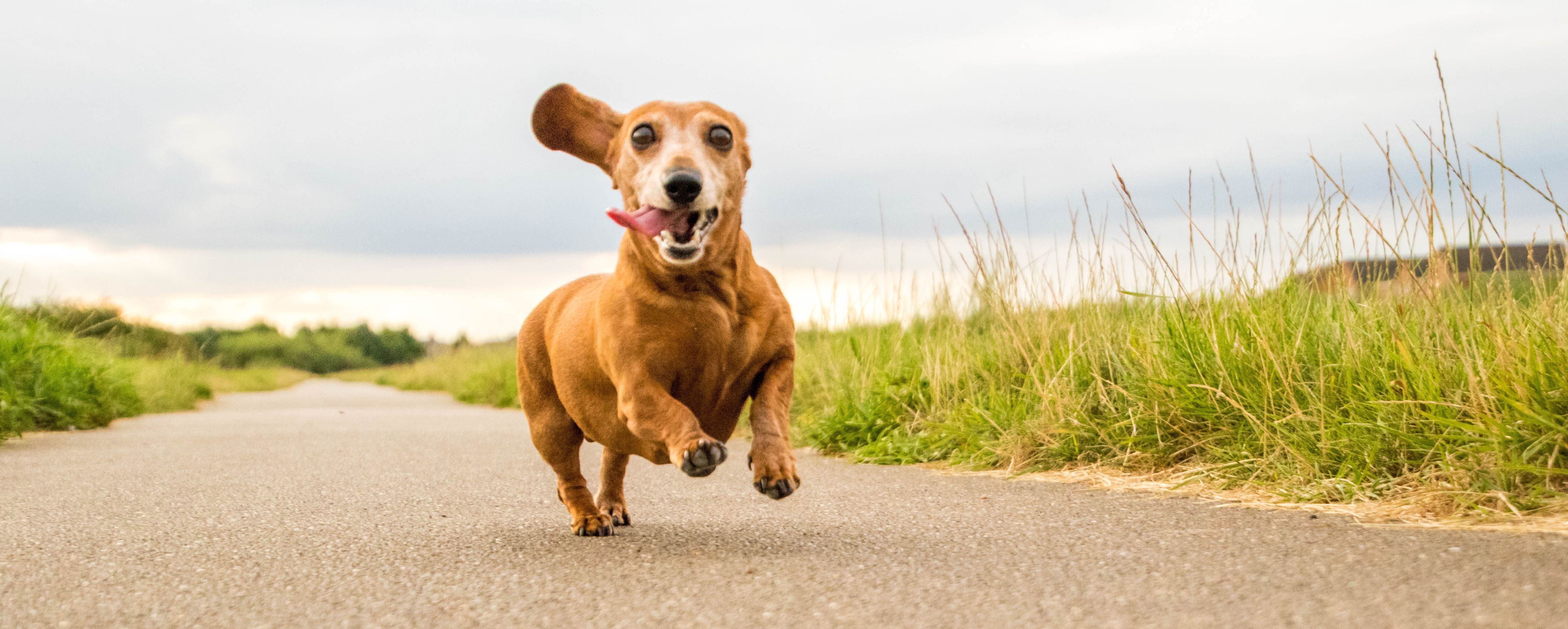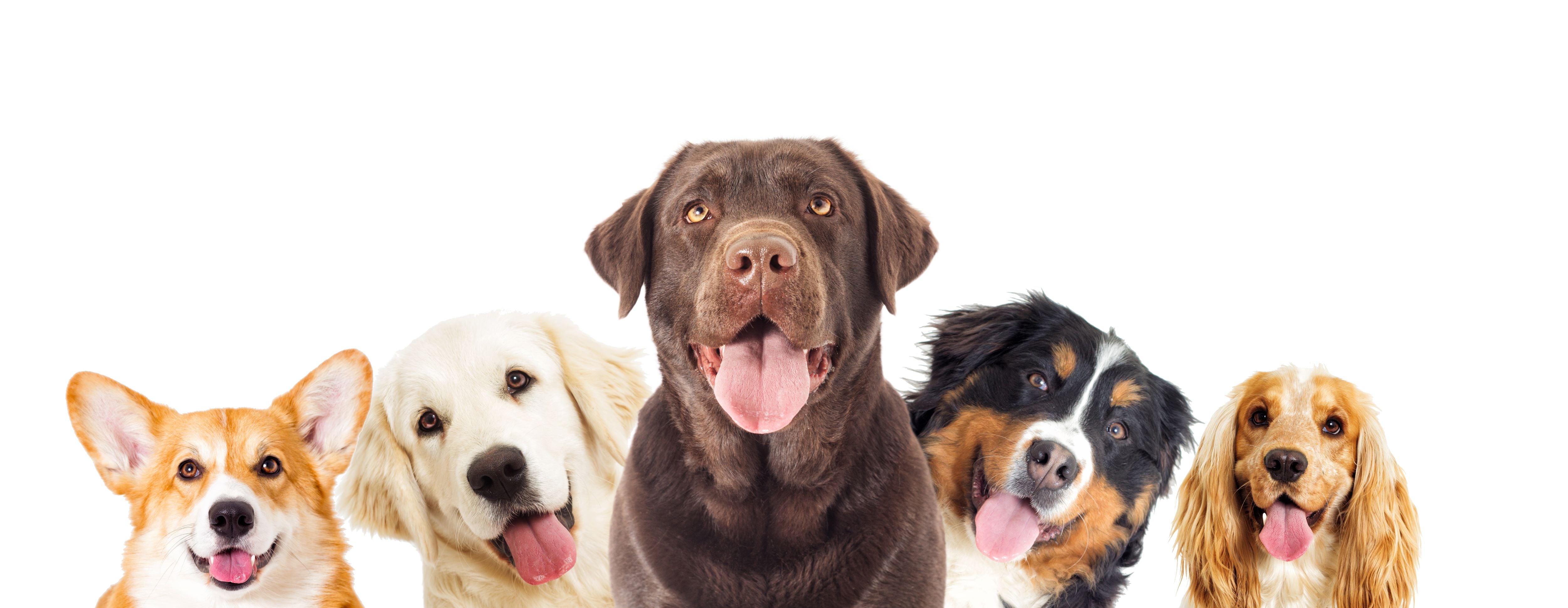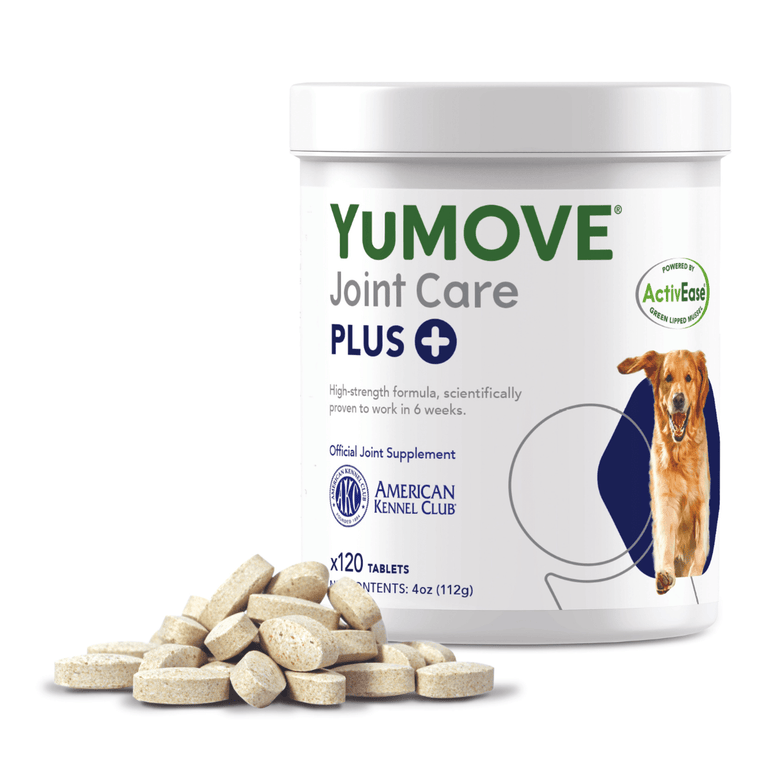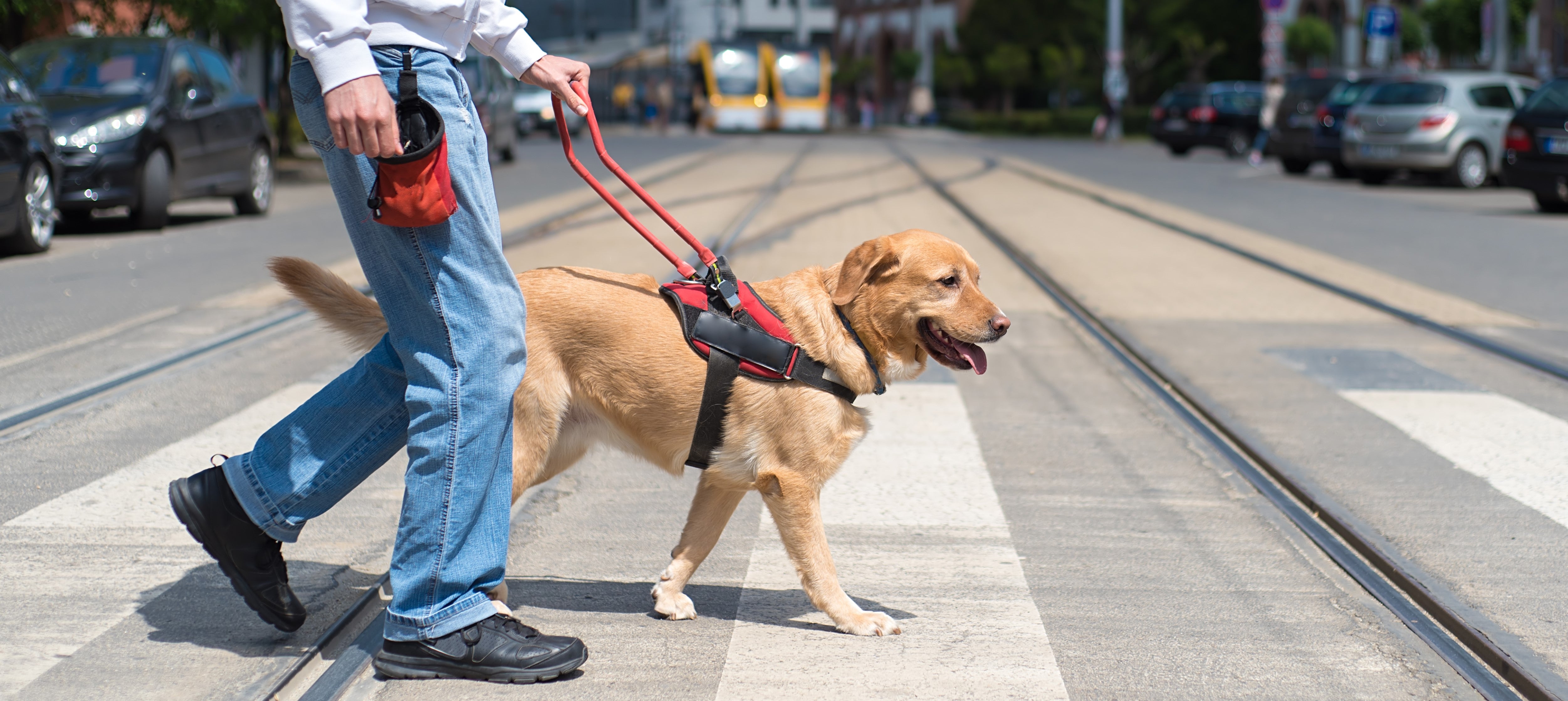When your dog has stiff joints, it’s important to use tried and tested techniques to help support their mobility. As well as using a great joint supplement like YuMOVE, we recommend consulting with a Veterinary Physiotherapist for an exercise routine that’s perfect for your pet.
Today, we’re very happy to give you this introduction into canine physiotherapy home exercises, from Kathryn Hall, a UK fully qualified veterinary physiotherapist who runs the specialized equine and canine veterinary physiotherapy service Animotion.
Do not try these exercises without first receiving guidance from a veterinary physiotherapist. Doing these exercises without seeking guidance from a qualified veterinary physiotherapist can cause harm to your dog. This is because each case is unique, and not all exercises are suitable for all dogs. These are just examples of some of the home exercises a veterinary physiotherapist may recommend for your dog.
How did you get into physiotherapy?
I’ve been passionate about animals from a young age and always wanted to help them in any way I could.
I did a degree in Animal Science and wrote a dissertation on the effects of Cavaletti pole exercises on horses’ movement. Cavaletti poles are poles around 10 feet long and 4 inches wide, that are laid on or slightly above the ground. By walking over the poles, horses can improve their balance, gait, and muscle strength.
My study demonstrated the effect that walking over Cavaletti poles had on horses’ range of motion in their carpus, or knee joint. That got me interested in how such a subtle movement can have a dramatic effect on an animal’s ability to move.
I then did a post-graduate diploma in Veterinary Physiotherapy and set up my own veterinary physiotherapy business in the UK. I’m qualified to treat all animals, but I predominantly work with dogs and horses.
What can I expect in a physiotherapy session?
A session of physiotherapy would usually include a full static and dynamic assessment, including range of motion and palpation to assess the dog. This would be followed by treatment using a combination of electrotherapies, massage, stretches and remedial exercises. These would be tailored to your dog’s specific case and may not all be used in one session.
What are the benefits of physiotherapy for dogs?
There are so many! For a dog with stiff joints, it can help increase the range of motion and flexibility, reduce stress and anxiety, and improve general mood. Exercises, massage, stretching and electrotherapies can help dogs with stiff joints to be more comfortable.
Can I give my dog physiotherapy at home?
Physiotherapy should always be performed by a qualified, insured physiotherapist. However, there are certain remedial exercises that your physiotherapist will give you, that you can perform at home. For example, I would treat a dog in a session of physiotherapy using electrotherapies, manual therapies, and remedial exercises, and then provide the owner with a plan of some remedial exercises they can perform at home.
If it’s done the right way, physiotherapy at home can have an extremely positive effect on your dog. But if you do the exercises the wrong way, or do too many repetitions, for example, you won’t be helping your dog at all.
What kinds of remedial exercises can I give my dog?
There are many different exercises, however, there are six types that are often recommended. Here’s an overview of those six types of exercise, their benefits, and the risks of carrying them out without the support of a qualified veterinary physiotherapist.
1. Slow lead walking
Slow walking on a lead is a great way for a dog with stiff joints to build up muscle mass. Sometimes, you see dogs trotting along, particularly small dogs. It means that they have a shorter ‘stance’ phase, when their paws are in contact with the ground. Although this is totally normal, in some instances a dog will do this to compensate and reduce the length of the stance phase on that leg, meaning taking weight off an area that’s feeling stiff.
By asking your dog to walk slowly on the lead instead, this increases the stance phase and therefore they put more weight on each leg, in turn increasing the strength of the muscles on each leg.
Another important thing to note when walking a dog with stiff joints, is that you want to reduce any kind of excessive exercise. That means small walks, done often, are better than one big walk a day. For example, instead of one 45-minute walk, you could take your dog for three 15-minute walks. Your dog will feel less stiff as they’re getting up and moving frequently, rather than lying down for extended periods. This should help with circulation and Hyaluronic Acid production within the joint.
Slow lead walking is often recommended for dogs with stiff joints. Although this is a very simple exercise, I would still recommend getting guidance from your veterinary physiotherapist on how often and long is appropriate for your dog. Each case is different.
2. Passive range of motion exercises

Passive Range of Motion – or PROM – is the range of motion of a joint, performed without muscle contraction, using an external force (such as a therapist’s hands). This is essentially where your dog lies down, and you move their legs for them
The benefit of these exercises is that your dog’s joints are being moved without them using any energy. If your dog has stiff joints, it helps to maintain and increase movement and flexibility in the joint. It also helps the joint to produce the synovial fluid that acts as cushioning, and as a shock-absorber for your dog, and it will help to reduce any muscle atrophy forming in a dog that’s not as active as it once was.
The easiest way to do this exercise is to get your dog to lay down on one side, isolate the joint, and gently flex and extend the limb within its natural range of motion.
With PROM exercises, it’s vital to receive instruction from a veterinary physiotherapist first, or you could move the limb too fast, or hold it at the wrong angle. Please don’t attempt this without consulting an expert. Get professional advice before you start.
3. Static weight shifts
If a dog has stiff joints, they will often compensate. For example, if a dog has stiff joints in their hind legs, they will front-load. In other words, they will put more weight on their front legs, which will put those joints under more strain.
Static weight shifts are a simple but effective exercise, that helps to encourage more even weight distribution, and therefore muscle mass. These exercises help reduce uneven forces on different joints, and keep the joint more supported as the dog gets older.
It's recommended that you do this exercise with two people. With the dog standing square, one person supports the dog at the front, by the shoulders. The other person supports the dog with one hand on each hip joint.
The next step depends on what weight-shifts you have been recommended, in order to target specific areas. For example, if your physiotherapist recommended doing hind weight-shifts, the person supporting the hips would very gently move the dog to one side, back to the middle, and then to the other side. This is a very subtle movement that should not make the dog move its leg. Instead, it should just cause the dog to bear more weight on one side.
This is similar to when you’re standing with both feet on the ground, shifting your weight from one foot to the other.
As before, you must have precise instructions from your veterinary physiotherapist on how to carry out these exercises properly. If you make your movements too quick, you won’t be producing the slow, intense movement that will help to increase your dog’s muscle strength. Different dogs will also need very different amounts of exercise. The number of reps recommended will also vary a lot depending on the case.
4. Sit to stand
This is the canine equivalent of a squat. The idea is to help your dog build up the muscles around their hip and knee joints, in a slow and controlled way.
If you think of your dog’s movement when they chase a ball or jump up high, they will be flexing and extending their back legs to the maximum extent. With this exercise, you’re allowing your dog to strengthen their muscles, but within their own happy range of motion.
Essentially, you ask your dog to sit, then to stand. It’s a simple exercise, but your dog needs to stand up straight – in what we call the ‘sagittal plane’. This means standing up without bending over to one side, which your dog might tend to do, to compensate for stiff knee or hip joints. For example, if your dog always sits or lies to one side, this could be a sign that it's uncomfortable for them to lie on the opposite leg.
Although this is a straightforward exercise, you will need to ask your veterinary physiotherapist to advise whether it’s suitable for your dog and, if so, to let you know the correct number of repetitions.
5. Cavaletti poles
Often, when a dog is stiff, they will have a reduced range of motion, meaning their stride length is reduced. Here’s an easy way to see if this is the case: when your dog’s front paw, for example, leaves the ground, does their left back paw go straight into the spot that the front paw was just in? If not, this is a sign of stiffness – since when a dog has stiff joints, their back paws don’t have the flexibility to reach as far forward.
Cavaletti pole exercises help, because your dog has to flex and extend their legs to step over poles on the ground. By lifting their leg higher, they increase their flexor and extender muscles, and their range of motion.
Your veterinary physiotherapist can advise you on the right number of repetitions and the correct spacing between the poles, according to the condition and size of your dog. If you have the wrong spacing, your dog could stand on the pole and slip. Also, if your dog has a very low flight arc and is unable to lift their leg very high at all, ground poles may not be appropriate.
6. Weaving, circles, and figures of eight
You can do these exercises in your home or, depending on the weather, in your garden. The idea is to encourage your dog to walk in a nice big circle, or figure of eight, or to walk between weaving poles. All these exercises will help strengthen your dog’s muscles and increase their range of motion.
When your dog is walking in a circle, they are increasing the weight load on their inside legs, helping to increase muscle strength. At the same time, their outside legs are having to stretch farther than normal to get around the circle. This also helps increase flexibility and range of motion. Just remember, with circle work, it’s important to change direction, so you target both sides of your dog’s body.
Before attempting these exercises, ask for your veterinary physiotherapist’s advice. They’ll suggest different numbers of repetitions depending on your dog’s age and condition. Also, if your dog has very stiff joints, walking in circles would not be recommended as this could put additional pressure on their joints.
How can I find a good veterinary physiotherapist?
To find a good veterinary physiotherapist, ask your veterinarian for a recommendation, or check with reputable veterinary organizations in your state or territory.
Once you’ve found someone who’s qualified and is recommended by your veterinarian, the next step is to meet up with them, to see how you and your dog get along with them.

Kathryn Hall BS (Hons), PgDIP Veterinary physiotherapy, NAVP.

